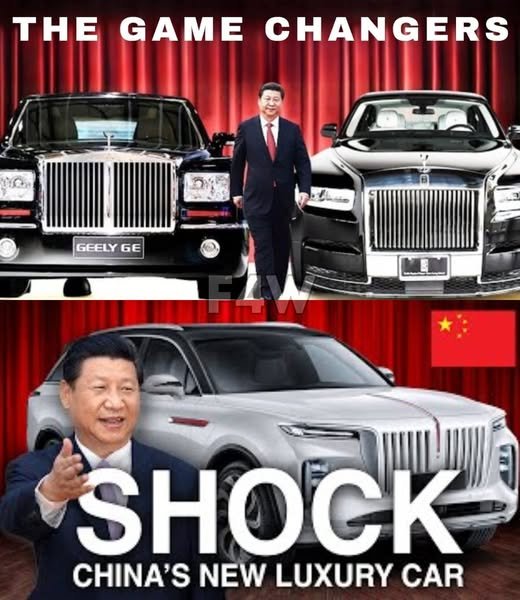In recent years, China has emerged as a formidable player in the electric vehicle (EV) market, introducing a wave of innovative cars that are reshaping the global automotive landscape. With advancements in technology, competitive pricing, and an increasingly robust charging infrastructure, Chinese manufacturers are not just participating in the EV revolution; they are leading it. The rise of nine specific Chinese cars has sparked intense debate about the future of the automotive industry, challenging established brands and altering consumer perceptions.
One of the most notable entries is the BYD Han, a luxury sedan that combines impressive range with cutting-edge technology. With its sleek design and advanced battery capabilities, the Han has garnered attention not only in China but also in international markets. Critics argue that BYD’s rapid rise threatens traditional automotive giants, which have struggled to keep pace with the innovation and affordability offered by Chinese manufacturers.
Another game-changer is the NIO ES6, an electric SUV that emphasizes performance alongside sustainability. NIO’s unique battery-swapping technology allows drivers to replace their depleted battery with a fully charged one in minutes, addressing one of the significant concerns about EV range. However, this raises questions about the viability of battery-swapping as a widespread solution and whether it could lead to a fragmented charging infrastructure.
The Xpeng P7 has also made waves with its impressive autonomous driving features, positioning itself as a serious contender in the tech-savvy EV market. While many hail its capabilities as a leap forward, skeptics worry about the safety and reliability of autonomous technology, debating whether the focus should be on perfecting current driving systems rather than pushing for full autonomy.
Then there’s the Li Auto One, which employs a range-extended electric system, combining battery power with a gasoline engine. This hybrid approach has led to discussions about whether such vehicles dilute the essence of electric vehicles or provide a necessary bridge for consumers hesitant to go fully electric. Critics argue that hybrids can perpetuate reliance on fossil fuels, undermining the environmental benefits of transitioning to electric.
Geely’s Geometry A stands out for its affordability and practicality, appealing to a broader market segment. Its success challenges the stereotype that electric vehicles are luxury items. However, this raises concerns about quality control and safety, as rapid production to meet demand could compromise vehicle standards.
The MG ZS EV, a product of China’s SAIC Motor, has gained traction in international markets, particularly in Europe. Its competitive pricing and features have sparked debates about the implications for local manufacturers, as European brands scramble to maintain market share against their Chinese counterparts.
Changan’s Eado EV has also entered the fray, offering budget-conscious consumers an accessible entry into the EV market. While this democratization of electric vehicles is celebrated, it opens discussions about the long-term sustainability of low-cost EVs and whether they can meet consumer expectations for performance and longevity.
The Wuling Hongguang Mini EV has captured attention with its ultra-compact design and ultra-low price, appealing to urban commuters. Its popularity has sparked debates about the future of urban mobility, as it raises questions about whether such vehicles adequately address issues like safety and road congestion.
Lastly, the Fengon E3 from DFSK highlights the trend of small, efficient electric vehicles aimed at urban markets. Its introduction prompts a conversation about the future of city transportation and whether small EVs can effectively replace traditional vehicles in densely populated areas.
In conclusion, the emergence of these nine Chinese cars has undeniably shaken the entire EV industry, challenging established norms and prompting intense debates about the future of mobility. While some celebrate the innovation and accessibility these vehicles bring, others voice concerns about quality, safety, and the environmental implications of such rapid growth. As we move forward, the impact of these vehicles will likely continue to evolve, shaping the landscape of transportation for years to come.



